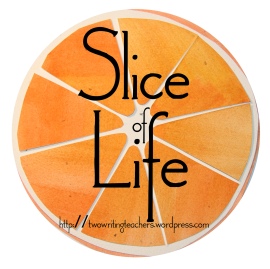
This morning I’m in Minneapolis for NCTE’s Annual Convention. I’m looking forward to seeing poetry friends old and new at the Children’s Book Award Luncheon tomorrow, where Marilyn Singer will be honored with the Excellence in Poetry for Children Award.
Many wonderful poets live in Minnesota, so I thought it would be fun to do a mini-round up of three of my favorite poets from this beautiful state.

First up is Laura Purdie Salas. Laura has written two picture book poetry collections, and her work has appeared in many anthologies, including the stunning new National Geographic Book of Nature Poetry. Last year I had the honor of writing the activity guide for Laura’s Wacky, Wild, and Wonderful: 50 State Poems, part of her “Painless Classroom Poems” series. Laura graciously allowed me to share these poems with you today.
“Minnesota: The Birth of Old Man River”
A lake creates a lazy stream
That flows through pines and slips away,
Then picks up barges, logs, and steam,
Becomes a mighty waterway.
Walk on rocks across this sliver,
Cross the current, slow and mild.
It will grow to Old Man River
Though for now it’s still a child.
© Laura Purdie Salas, 2015
“Things to Do If You Are a Tree”
by Laura Purdie Salas
Wake up to geese honks and puddle splashes.
Grow a leafy shirt.
Hug birds’ nests and lost kittens.
Stretch toward summer sun.
Shade the backyard.
Drink plenty of rain.
Gulp nitrogen from the soil.
Eat a kite for dessert.
Dance with the wind.
Knit a scarlet fall sweater.
Drop your leaves to protect chipmunks and snakes.
Set your alarm clock for spring.
Settle in for a snowy winter sleep.
© Laura Purdie Salas
Joyce Sidman, a past recipient of NCTE’s Excellence in Poetry for Children Award, was born in Connecticut, but now calls Minnesota home. Her gorgeous picture book poetry collections have won numerous awards and honors.
“Grass”
by Joyce Sidman
I grow in places
others can’t,
where wind is high
and water scant.
I drink the rain,
I eat the sun;
before the prairie winds
I run.
Read the rest here.
Although she’s not a children’s poet, many of Joyce Sutphen‘s poems evoke the beauty of nature and are very accessible to young readers. Sutphen is currently Minnesota’s Poet Laureate.
“Some Glad Morning”
by Joyce Sutphen
One day, something very old
happened again. The green
came back to the branches,
settling like leafy birds
on the highest twigs;
the ground broke open
as dark as coffee beans.
The rest of the poem can be found here.
Please be sure to visit Tricia Stohr-Hunt’s lovely blog, The Miss Rumphius Effect, for the Poetry Friday Roundup.













